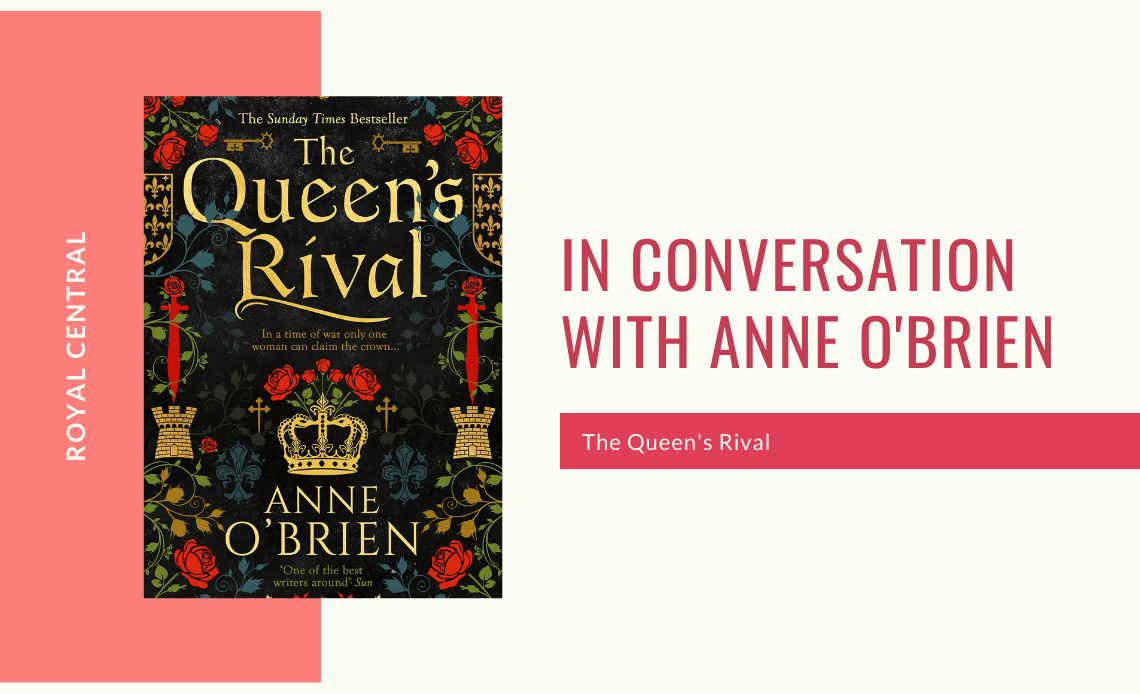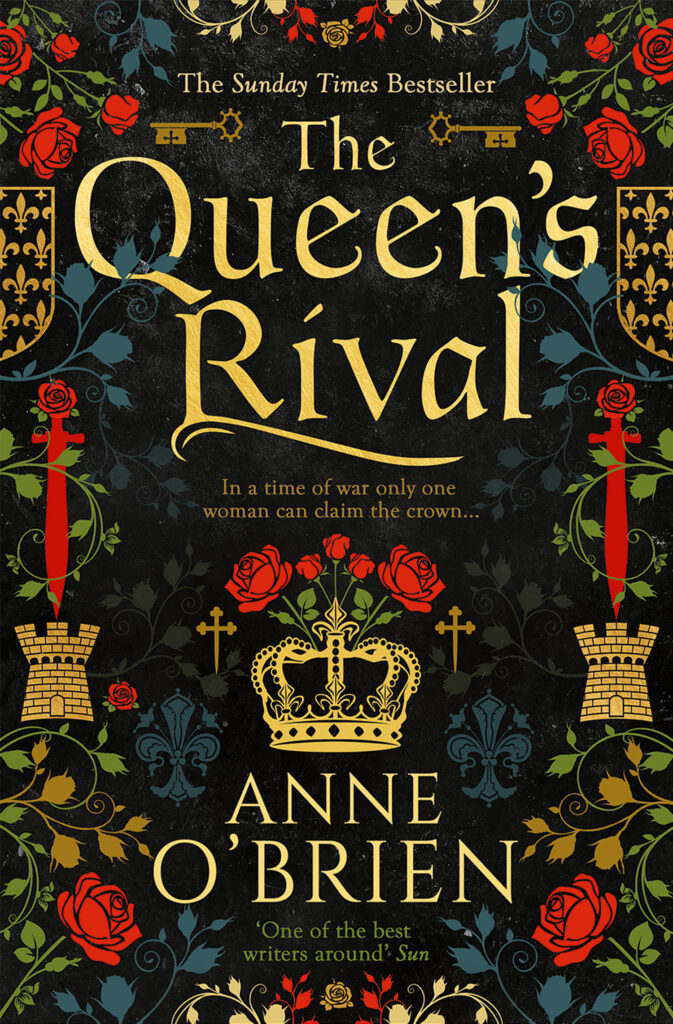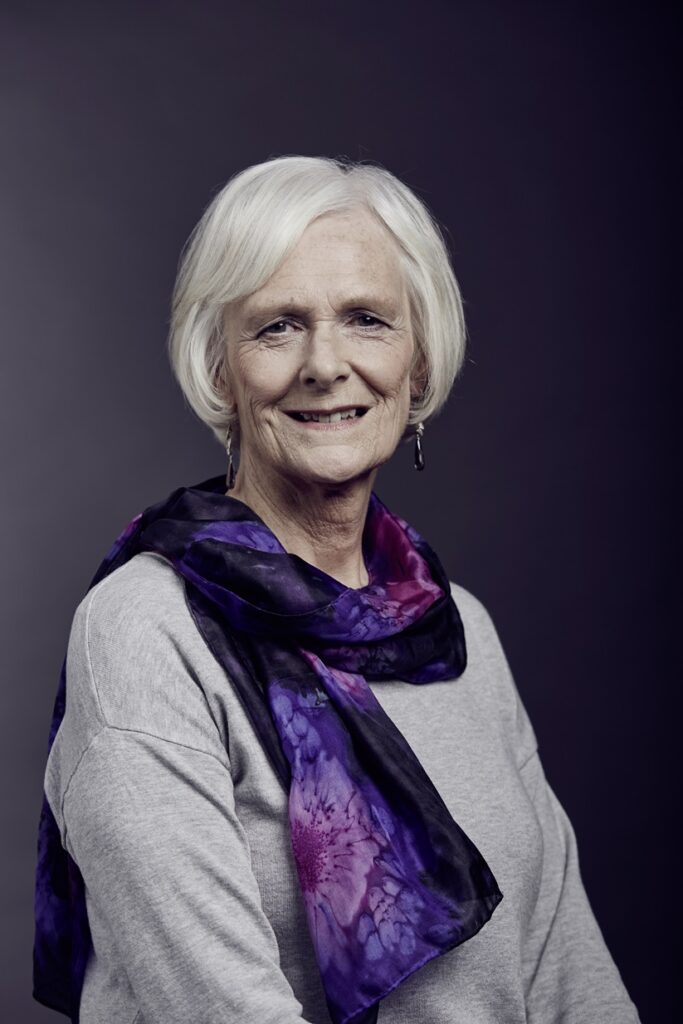
Cecily Neville came close to being Queen of England, saw two sons and a grandson become kings and ultimately witnessed her granddaughter help end the Wars of the Roses and begin a royal dynasty of unrivalled influence. Yet, she has been a sometimes obscure figure and while the tales of Tudor women have been told in a string of high profile novels in recent years, Cecily has often been a bit part player. Now, her story is being brought to life in a new fictional telling by highly acclaimed author, Anne O’Brien. Her take on Cecily’s story covers the most tumultuous years of her life. Royal Central spoke to Anne O’Brien about her spotlight on Cecily Neville – The Queen’s Rival.
Anne, thanks for speaking to Royal Central. Cecily was the mother of two kings and an important political figure in her own right – where did you start writing such a complex story?
I chose the events in the town of Ludlow, the Yorkist fortress in the Welsh Marches, in October 1459. By now Cecily was forty four years old. She had been married to Richard, Duke of York, for thirty years, travelling between England and France, living in Rouen and Dublin when Richard was on campaign. She had seen all twelve of her children born by 1459 and had watched five of them die premature deaths. She had experienced the dangerous politics of the day, with a weak king allowing the battle for power between York and the Beauforts to rage. She knew prestige as wife of the Lord Protector, and also fear when he was ousted by the Beaufort Duke of Somerset.
Why, then, with so much going on in her earlier life, choose Ludlow in 1459 to begin her story? Because this was the occasion, after the debacle at Ludford Bridge, when Cecily stepped out from the shadow of her family and made a personal impact on history. Abandoned by her husband, brother, and elder two sons, Cecily was left in Ludlow with her three younger children, Margaret, George and Richard. If she ever had to grasp her courage and show bravery it was here when Cecily stood witness to the attack on her home and against the people of Ludlow. Taking the children with her, she stood in the market place to make a Yorkist presence when the houses and taverns were sacked and women defiled. It was surely a moment of sheer terror as Ludlow was ‘robbed to the bare walls’. I can think of no better place to begin a novel about Cecily Neville than here, at the forefront of events.
What made you want to write about Cecily?
Cecily Neville was one of the most enigmatic of medieval English women, known for her piety in later life, but overshadowed by a dangerous personal scandal that could have brought down the House of York. Was she guilty of adultery? Who is to know? Cecily was a formidable woman who weathered that particular storm. She lived for eighty years, experiencing five reigns, interacting with the famous, infamous and influential characters through the tumult of the Wars of the Roses. She witnessed such change, suffered so much loss and experienced the satisfaction of seeing two of her sons wear the crown. Never an easy life, It has to be said. I thought that Cecily demanded to be allowed to speak out for herself. I also wanted to show that she was not a two-dimensional character, but one who lived and breathed and knew the horrors of the wars for herself.
How influential was Cecily?
It is difficult to say how influential Cecily was within her family. How much influence did she have on her husband’s choices, or on those of her sons? There is so little evidence, but I doubt if she was silent in her household. Perhaps she had very little influence in the end since her sons made their own decisions, often to Cecily’s displeasure, not least Edward’s marriage to Elizabeth Woodville. And yet her intellect and political judgements were never questioned. Nor was her ambition. She was quick to adopt the title King’s Mother when her son Edward became King. Cecily’s skills at negotiation and holding the reins of power were recognised by the new King Edward IV. In the months before his coronation, when Edward was still in battle against the Lancastrians, he placed Cecily in ultimate authority over his household at Baynard’s Castle, informing the notables of London that she held the power while he was waging war in the north. He had every confidence in her political aptitude. It may be that she had more influence than we shall ever know.

What most surprised you about her?
What fascinated me was the value of Cecily to York’s claim to the throne, and the dramatic role played by Cecily when Richard of York returned from exile in Ireland and made his entry into London where he claimed the crown before parliament. This role was a strategy of political judgement and clever politics. Cecily could have waited in London where she was living until Richard arrived. Instead she obeyed his command and travelled all the way to the west to meet up with him in Hereford. They returned to London together.
What a statement of power they made, with Cecily showing her true importance to her ambitious husband. Cecily rode in a chair swagged in blue velvet, one of York’s heraldic colours, the carriage pulled by four pairs of horses, while York was dressed in white and blue livery embroidered with fetterlocks, implying his Plantagenet pedigree. At Abingdon the trappings of royalty were shaken out for all to see as they passed by. Banners displaying the arms of England, trumpets and clarions, York’s sword borne upright before him as if it was the royal sword of state. It was a true triumphal progress with Cecily at the centre. Cecily herself made a more than useful contrast with Margaret of Anjou. Obedient to her husband, a useful family of sons, a known life of piety. She knew how to make a statement!

There is a lot of focus on Elizabeth Woodville and Margaret Beaufort in modern writing on the Wars of the Roses – do you think Cecily is overlooked?
The wars, by the nature of warfare, were dominated by men. Cecily has also without doubt been eclipsed by other notable women: Margaret Beaufort, Elizabeth Woodville, Margaret of Anjou. Perhaps they were more colourful, more dramatic, more outspoken. These women would seem to be in positions of more obvious power as Queen or future King’s Mother. Yet, with royal blood in her own veins through her mother Joan, Countess of Westmorland, daughter of John of Gaunt, Cecily stood at the centre of a very powerful family alliance of Nevilles and Plantagenets though her marriage to Richard, Duke of York. Even after Richard’s death, Cecily remained essential as King’s Mother, invested with power by her son. She clearly had her finger on the political pulse of the realm. She does not deserve to be neglected.
Did you like Cecily?
Yes, I do like her, having lived with her for almost two years now between my first research and the final edits. I do not imagine she was the most comfortable of women to live with; the pious life of her later years was strict and dedicated, showing an enormous strength of will imposed on her household. And what a sense of duty she had, bred into her since childhood. She certainly had her fair share of pride as a Neville and Plantagenet. Did she have a sense of humour? I do not know. Perhaps the heart-breaking losses in her life was not appropriate to humour. What she did have was honesty, integrity, loyalty, a strong feeling of family. Cecily Neville was a woman to admire.
The Queen’s Rival by Anne O’Brien is published by HQ Stories in hardback, ebook and audio book and is available from Harper Collins as well as from major High Street and onlein retailers. You can find out more about Anne O’Brien on her website and via her Twitter account.

